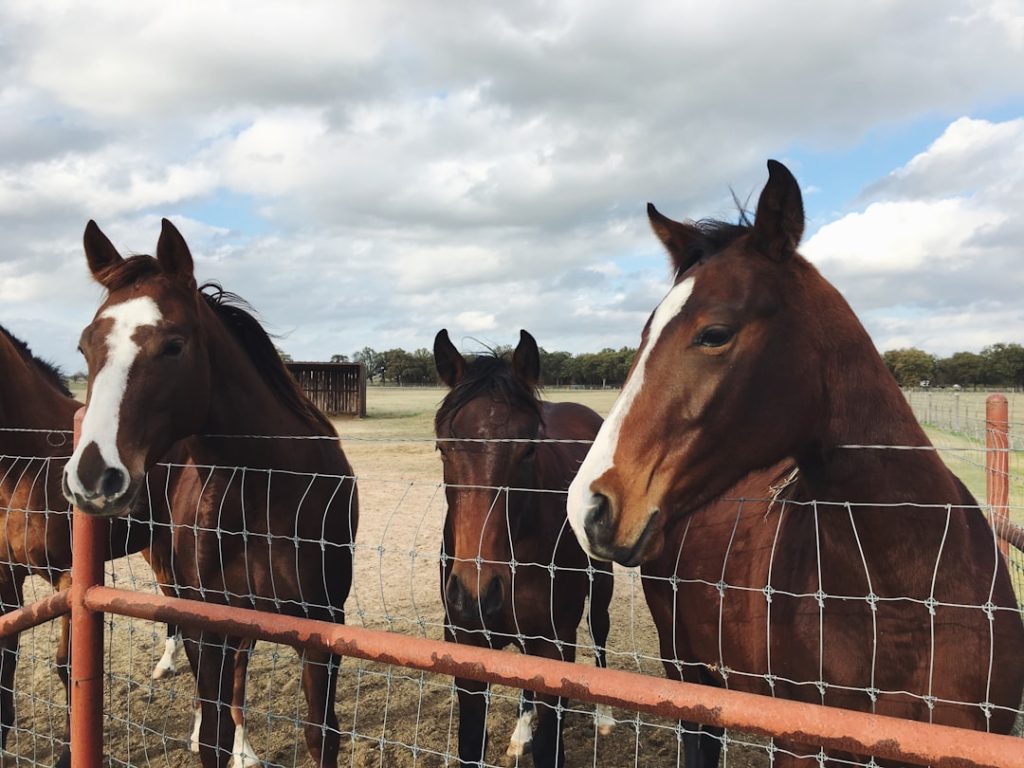Integrating rabbits and chickens in a shared environment can be beneficial for small-scale farmers and homesteaders. These animals are commonly chosen for their ability to provide food resources, with rabbits offering meat and fur, while chickens supply eggs and meat. The combined waste from both species can serve as an effective fertilizer for agricultural purposes.
However, successfully housing rabbits and chickens together necessitates thorough planning and ongoing management to ensure the health and safety of both animal groups. This article will address crucial factors for maintaining a balanced habitat for rabbits and chickens, including safety measures, nutritional requirements, waste handling, disease prevention, and strategies to reduce aggressive behavior between the species.
Table of Contents
- 1 Creating a Safe and Secure Environment for Both Rabbits and Chickens
- 2 Providing Proper Nutrition for Rabbits and Chickens
- 3 Managing Waste and Odor in a Mixed Rabbit and Chicken Environment
- 4 Monitoring and Addressing Potential Health Concerns for Rabbits and Chickens
- 5 Ensuring Peaceful Coexistence and Minimizing Aggression Between Rabbits and Chickens
- 6 Conclusion and Final Tips for Successfully Keeping Rabbits and Chickens Together
- 7 FAQs
- 7.1 Can rabbits and chickens be kept in the same area?
- 7.2 What are the benefits of keeping rabbits and chickens together?
- 7.3 What precautions should be taken when keeping rabbits and chickens together?
- 7.4 What should be considered when designing the living space for rabbits and chickens?
- 7.5 What are some potential challenges of keeping rabbits and chickens together?
- 7.6 Are there any specific breeds of rabbits or chickens that are better suited for cohabitation?
Key Takeaways
- Keeping rabbits and chickens together can be a rewarding experience, but it requires careful planning and consideration of their unique needs.
- Creating a safe and secure environment for both rabbits and chickens involves providing separate living spaces with sturdy fencing and predator-proof housing.
- Proper nutrition for rabbits and chickens includes a balanced diet of hay, vegetables, and pellets for rabbits, and a mix of grains, seeds, and greens for chickens.
- Managing waste and odor in a mixed rabbit and chicken environment requires regular cleaning of their living areas and proper disposal of waste to prevent health issues.
- Monitoring and addressing potential health concerns for rabbits and chickens involves regular veterinary check-ups, parasite prevention, and prompt treatment of any illnesses or injuries.
Creating a Safe and Secure Environment for Both Rabbits and Chickens
Housing Requirements
This includes ensuring that the housing and fencing are suitable for both rabbits and chickens. For rabbits, a hutch with a solid floor and wire mesh sides is essential to protect them from predators and provide a comfortable living space. Chickens, on the other hand, require a secure coop with proper ventilation and roosting space.
Designing a Harmonious Environment
When designing the housing for both species, it’s important to consider their individual needs, such as nesting boxes for chickens and hiding spots for rabbits. Additionally, the outdoor area should be enclosed with predator-proof fencing to prevent attacks from predators such as foxes, raccoons, and birds of prey.
Outdoor Space Layout
By creating a safe and secure environment, you can minimize the risk of harm to both rabbits and chickens while allowing them to coexist peacefully. In addition to housing, it’s important to consider the layout of the outdoor space to accommodate both rabbits and chickens. Providing separate areas for grazing and foraging can help prevent competition for food and reduce the risk of aggression between the two species. For example, setting up a rotational grazing system can allow rabbits and chickens to access fresh grass and vegetation without overcrowding or overgrazing.
Providing Proper Nutrition for Rabbits and Chickens

Proper nutrition is essential for the health and well-being of both rabbits and chickens when kept together. Rabbits are herbivores and require a diet high in fiber, such as hay, fresh vegetables, and limited amounts of pellets. On the other hand, chickens are omnivores and require a diet that includes a balance of grains, seeds, fruits, vegetables, and protein sources such as insects or commercial feed.
When keeping rabbits and chickens together, it’s important to provide separate feeding areas to prevent competition for food. This can help ensure that each species receives the appropriate nutrition without being outcompeted by the other. In addition to separate feeding areas, it’s important to monitor the dietary needs of both rabbits and chickens to prevent deficiencies or imbalances.
For example, rabbits require a constant supply of fresh hay to maintain healthy digestion, while chickens require access to grit to aid in the digestion of their food. By understanding the specific nutritional requirements of each species, you can provide a balanced diet that meets their individual needs. Additionally, providing access to fresh water at all times is essential for both rabbits and chickens to prevent dehydration and maintain overall health.
By carefully managing the nutrition of both species, you can promote their well-being and ensure that they coexist harmoniously.
Managing Waste and Odor in a Mixed Rabbit and Chicken Environment
Managing waste and odor is an important consideration when keeping rabbits and chickens together. Both species produce waste that can impact the cleanliness and odor of their living environment if not managed properly. For rabbits, their waste consists of droppings and soiled bedding, which should be removed regularly to maintain a clean living space.
Additionally, rabbit waste can be composted to create nutrient-rich fertilizer for gardens and crops. Chickens produce waste in the form of droppings, which can accumulate quickly in their coop and outdoor area. Regular cleaning of the coop and the use of absorbent bedding can help manage odor and prevent the buildup of waste.
When keeping rabbits and chickens together, it’s important to consider the management of their waste in a way that benefits both species. For example, rabbit waste can be used as bedding material in the chicken coop or composted with chicken waste to create fertilizer. By managing waste in a way that benefits both rabbits and chickens, you can minimize odor and maintain a clean living environment for both species.
In addition to managing waste, it’s important to consider odor control in a mixed rabbit and chicken environment. Proper ventilation in the housing for both species can help reduce moisture buildup and prevent the accumulation of odors. Additionally, using natural odor control methods such as adding herbs or essential oils to bedding can help neutralize odors in the living environment.
By implementing effective waste management practices and odor control measures, you can create a clean and pleasant living environment for both rabbits and chickens.
Monitoring and Addressing Potential Health Concerns for Rabbits and Chickens
Monitoring the health of both rabbits and chickens is essential when keeping them together to ensure early detection of any potential health concerns. Rabbits are susceptible to various health issues such as gastrointestinal stasis, dental problems, respiratory infections, and parasites. Regular health checks and monitoring for signs of illness or discomfort can help prevent these issues from escalating.
Additionally, providing a clean living environment, proper nutrition, and regular exercise can help promote the overall health of rabbits. Chickens are also prone to health issues such as respiratory infections, parasites, egg binding, and injuries from pecking or aggression. Regular health checks, monitoring egg production, and observing behavior can help identify any potential health concerns early on.
Providing a clean coop, access to fresh water, proper nutrition, and regular dust baths can help maintain the health of chickens. When keeping rabbits and chickens together, it’s important to have a plan in place for addressing potential health concerns for both species. This may include establishing a relationship with a veterinarian who is knowledgeable about both rabbits and chickens or learning how to administer basic first aid for common health issues.
By staying vigilant and proactive about monitoring the health of both rabbits and chickens, you can ensure that any potential health concerns are addressed promptly.
Ensuring Peaceful Coexistence and Minimizing Aggression Between Rabbits and Chickens

Separate Spaces for Rabbits and Chickens
To minimize aggression between rabbits and chickens, it’s important to provide separate areas for nesting, feeding, and resting. This can help prevent competition for resources and reduce the risk of confrontations between the two species. Additionally, providing hiding spots or shelters for rabbits can help them feel secure in their environment and reduce stress.
Reducing Aggression in Chickens
For chickens, ensuring that they have adequate space in their coop and access to nesting boxes can help reduce aggression towards other animals. It’s also important to observe the behavior of both rabbits and chickens regularly to identify any signs of stress or aggression.
Monitoring Behavior and Intervening Early
By understanding the behavior of both rabbits and chickens, you can intervene early to prevent aggression and promote peaceful coexistence between the two species. This may include monitoring body language, vocalizations, or changes in behavior that could indicate discomfort or conflict between the two species.
Conclusion and Final Tips for Successfully Keeping Rabbits and Chickens Together
Keeping rabbits and chickens together can be a rewarding experience when done thoughtfully and with careful consideration for the needs of both species. By creating a safe and secure environment, providing proper nutrition, managing waste effectively, monitoring health concerns, and minimizing aggression between rabbits and chickens, you can promote a harmonious coexistence between the two species. In conclusion, successful cohabitation of rabbits and chickens requires attention to detail in all aspects of their care.
It’s important to provide suitable housing that meets the needs of both species while ensuring safety from predators. Proper nutrition tailored to each species’ requirements is essential for their well-being. Effective waste management practices are crucial for maintaining a clean living environment with minimal odor.
Regular monitoring of health concerns is necessary for early detection of any issues that may arise. Finally, minimizing aggression between rabbits and chickens through careful observation of behavior is key to promoting peaceful coexistence. In summary, keeping rabbits and chickens together can be a fulfilling endeavor that offers various benefits for homesteaders and small-scale farmers alike.
With proper planning, management, and attention to detail in all aspects of their care, rabbits and chickens can thrive together in a harmonious environment.
If you’re considering keeping rabbits and chickens in the same area, you may also be interested in learning about how many eggs geese lay. Check out this article on Poultry Wizard to find out more about geese breeding and egg production. Understanding the needs and behaviors of different types of poultry can help you create a harmonious environment for all of your animals.
FAQs
Can rabbits and chickens be kept in the same area?
Yes, rabbits and chickens can be kept in the same area as long as proper precautions are taken to ensure their safety and well-being.
What are the benefits of keeping rabbits and chickens together?
Keeping rabbits and chickens together can provide mutual benefits such as pest control, waste management, and companionship for the animals.
What precautions should be taken when keeping rabbits and chickens together?
Precautions such as providing separate housing, ensuring proper fencing, and monitoring for any signs of aggression or stress are important when keeping rabbits and chickens together.
What should be considered when designing the living space for rabbits and chickens?
The living space should be designed to provide separate areas for the rabbits and chickens, with consideration for their specific needs such as shelter, nesting boxes, and access to food and water.
What are some potential challenges of keeping rabbits and chickens together?
Some potential challenges include the risk of disease transmission, competition for resources, and the need for careful management to prevent any conflicts between the animals.
Are there any specific breeds of rabbits or chickens that are better suited for cohabitation?
Certain breeds of rabbits and chickens may be more adaptable to cohabitation, but individual temperament and proper management are more important factors to consider.
Meet Walter, the feathered-friend fanatic of Florida! Nestled in the sunshine state, Walter struts through life with his feathered companions, clucking his way to happiness. With a coop that’s fancier than a five-star hotel, he’s the Don Juan of the chicken world. When he’s not teaching his hens to do the cha-cha, you’ll find him in a heated debate with his prized rooster, Sir Clucks-a-Lot. Walter’s poultry passion is no yolk; he’s the sunny-side-up guy you never knew you needed in your flock of friends!







